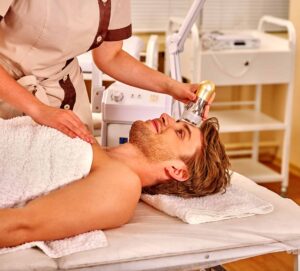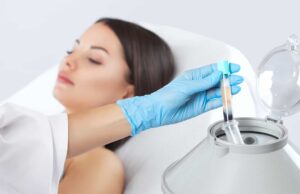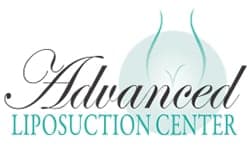Hair Loss
Treating male hair loss with Platelet Rich Plasma (PRP) Therapy.

Regenerative Medicine now offers effective, non-surgical, permanent treatment for male hair loss. This injection-based therapy is typically used to treat chronic joint injuries. Currently, it’s finding new use in the health and beauty industry as a versatile facial rejuvenation treatment. Treating male hair loss with PRP injections is an extension of this. The same intensive healing response can be used to halt or even reverse hair loss.
PRP is potentially useful on any scalp areas where living hair follicles are still present. Areas of long-standing baldness are unlikely to be affected. Benefits include the following:
- Thicker, fuller hair—increases the thickness (hair-shaft diameter) of existing hair growth.
- Increased hair count—can increase the number of hair-shafts per square inch.
- Speed up the hair-growth cycle—can make existing hair grow faster.
- Decrease shedding—extends the natural life-cycle of each hair strand.
Platelet Rich Plasma (PRP) therapy is one of the few treatments which addresses multiple causes of male hair loss. It is increasingly being used as both a stand-alone treatment and as part of more comprehensive hair loss protocols.
Platelet Rich Plasma (PRP) therapy for hair loss is done in three steps:

To start, the Platelet Rich Plasma solution which will be used is prepared using a small sample of the patient’s own blood. One or two vials are normally all that’s needed. This is easily collected via a standard medical blood draw immediately before the procedure.
Next, the sample is processed using a laboratory centrifuge found in most medical labs. The blood is spun at very high speeds until it separates out into layers. A thin, glossy portion appears near the top which contains extremely high concentrations of platelets. These microscopic particles play a key role in blood clotting, and are coated in naturally occurring haling factors. It is these chemical signals of healing which are thought to activate slow-growing or inactive yet living hair follicles.
The actual treatment can begin once the PRP solution is complete. The areas of your scalp being treated are first cleaned. Multiple injections are made directly into the scalp, usually about 1/3 inches apart. Your doctor will identify which areas are most likely to respond to treatment. These sections must still contain some living follicles, have a reasonable blood supply, and be otherwise healthy.
At home care:
Patients are often sent home with a supply of a serum containing Platelet Poor Plasma (PRP). It should be applied using a specialized skin-roller for the best effect. This is a safe, simple way to maximize results which makes the fullest possible use of the available sample. The serum is simply applied at home until the supply runs out.
Does the procedure hurt?
No. Local anesthetic drugs such as lidocaine are used to prepare the scalp prior to treatment. As in a dentist’s office, these initial injections may be uncomfortable. After this point, the many PRP injections which are necessary can be made without pain.
The procedure itself causes no lasting trauma. Mild redness and soreness will likely be present in the days following the procedure. Routine activities can begin again immediately afterwards. Patients are advised to wear a high quality, high-SPF (Sun Protection Factor) sunscreen as healing continues.
What side effects, if any, can occur?
The vast majority of patients who receive this treatment experience no side effects or complications of any kind. Platelet Rich Plasma for male hair loss is an injection-based therapy. It carries the same risks as any other routine medical injection. This includes infection and scarring, yet when done properly by a trained professional this risk is virtually eliminated. This procedure is regarded as generally safe by the medical community at large.
Who can benefit the most?
Any patient with balding or thinning hair can potentially receive some benefit. The only real limitation is the need for a critical number of living hair follicles in the area to be treated. Hair growth of any kind is not possible in the absence of living hair follicles.
An ideal candidate should also have an adequate blood supply to the scalp. The skin should be in good overall health, and free of other medical conditions before starting treatment.
How many treatments are usually needed?
Multiple treatments will always be necessary to achieve the best results. A standard treatment protocol includes 4 treatments delivered 12 weeks apart. Favorable results can begin to appear in as little as 8 weeks, and can continue indefinitely. A once-yearly maintenance visit is recommended on an ongoing basis going forward
Side Effects
There could be negative effects with PRP because it involves injecting a material under the skin.
PRP is autologous, meaning it contains components that are derived entirely from your body. By avoiding the injection of additional drugs like cortisone or hyaluronic acid, there is less chance of an allergic reaction. However, there are dangers associated with the injection itself, such as:
infections, nerve damage
the injection site hurts; there is tissue damage
With your doctor, you should go over these possible hazards as well as the precautions they will take to reduce them.
Are there age limitations for PRP therapy for male hair loss?
There aren’t strict age limitations for PRP therapy for male hair loss, as suitability is assessed individually. PRP can benefit men of various ages experiencing hair thinning or early stages of male pattern baldness. However, its effectiveness may vary based on factors like the extent of hair loss, underlying causes, and the patient’s overall health. PRP is often considered for younger individuals with recent hair loss or those seeking to maintain their existing hair. Older individuals with more advanced balding patterns may benefit less. Consultation with a healthcare provider or hair restoration specialist helps determine if PRP therapy is appropriate regardless of age.
How soon can patients expect to see results after PRP therapy?
After PRP (Platelet-Rich Plasma) therapy for hair loss, results can vary among individuals. Some patients may begin to notice changes in their hair within a few months, while others might take longer. Typically, early results involve reduced hair shedding and improved hair thickness. Significant regrowth may take several months, often around 6 to 12 months after treatment. Consistency with recommended treatment sessions and post-treatment care can influence the speed and extent of results. It’s essential to maintain realistic expectations and consult with a healthcare provider or specialist for a personalized timeline based on your specific condition and response to PRP therapy.
Can PRP therapy be used for beard or facial hair growth in men?
Yes, PRP therapy can be used for beard or facial hair growth in men. It’s a minimally invasive treatment where platelet-rich plasma is injected into the beard area to stimulate hair follicles and promote hair growth. This can be beneficial for men with sparse or patchy facial hair who desire a fuller beard. Multiple sessions may be needed for optimal results, and individual response can vary. Consulting with a healthcare provider or specialist experienced in PRP therapy for facial hair growth is advisable for personalized guidance
How Many PRP Sessions Do I Need For Noticeable Results?
The number of PRP sessions you might need for desired and noticeable results can vary as it greatly depends on severity of hair loss and response to treatment. But on average, most patients start seeing noticeable changes in 3-4 sessions, which are usually spaced out 4-5 weeks apart to make your hair growth is stimulated effectively. Patients often experience reduced hair shedding or increased thickness in hair after their second or third sessions. For better results, it’s important to go for follow-up appointments as well, which can happen every 4-6 Months. But remember there are other factors like age, hair loss pattern and your overall health which can have impact you’re the results.
What Happens If PRP Therapy Doesn’t Produce Desired Results?
If the PRP therapy isn’t working for you or isn’t providing the desired results then it could be because of factors like underlying medical conditions, advanced hair loss, or poor response to the treatment. If this happens, your doctor might recommend treatments like minoxidii, finasteride, or low level-level laser therapy bro enhance the effectiveness as complementary treatment. Also, you need to remember it’s essential to change your lifestyle, there are factors like stress, diet and hair care that might be interfering with your treatments outcome, so make sure to adjust them. Lastly, regular follow-ups are something you shouldn’t ignore, as they are essential for your progress!
Are Results Of PRP Therapy Permanent?
Unfortunately no, sadly the results from PRP aren’t actually permanent, as the hair growth acquired through the treatment will require maintenance sessions to keep them. PRP may stimulate hair growth, but ongoing hair loss because of genetics and age cannot be fully stopped. And maintenance sessions are essential, without them your results will go away. But PRP can be combined with treatments like minoxidill ot finasteride to help results last longer.
